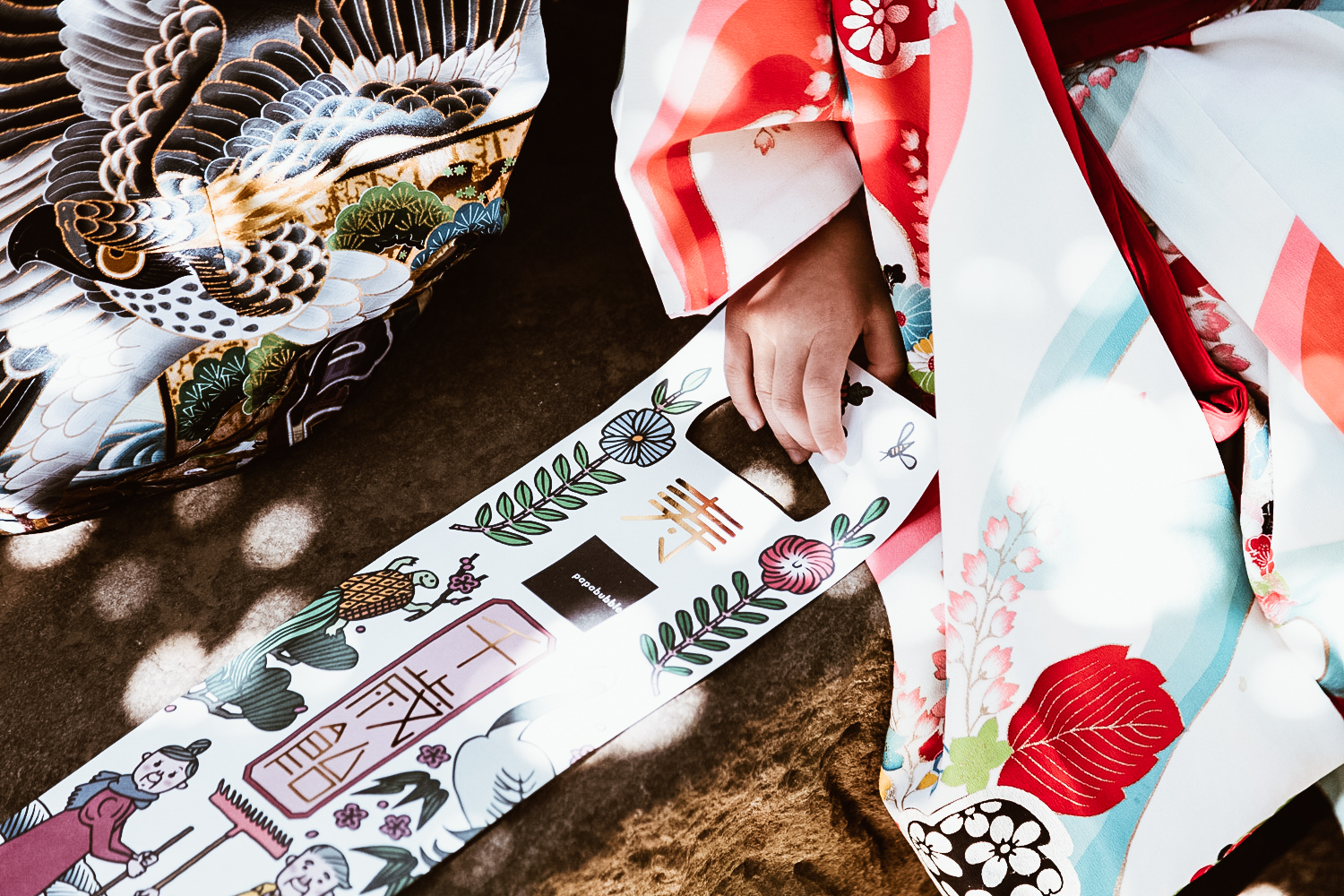Shichi-Go-San / Seven-Five-Three
November 15th is the day of Shichi-Go-San (七五 三, 7-5-3). This festival celebrates the rite of passage for girls aged 3 and 7 and children aged 3 and 5. These numbers are considered particularly lucky, like all odd numbers.

photo credits: cacadoresdelendas.com.br
Shichi-Go-San is the culmination of three traditions developed in the Heian period. The celebration first started among the court nobles who celebrated the passage of their children to “average childhood”. It was then adopted by the Samurai class to mark the important growth milestones.
Up to 3 years of age, a child will have shaved hair. After the age of 3, they would then be allowed to grow their hair a little longer. 5-year-old males could wear the hakama (袴, a traditional garment that resembles a wide skirt-pants up to the ankles and tied to the waist) for the first time, while the seven-year-old girls replaced the simple cords, used to tie their kimonos, with the traditional obi (帯, the traditional silk belt). After the Meiji period, this practice was also adopted by ordinary citizens, introducing the ritual visit to a Shinto shrine to remove evil spirits and wish their children a long and prosperous life.
Shichi-Go-San and the subtle changes in the modern era

photo credits: amu-zen.com
Like most Japanese traditions, Shichi-Go-San keeps the rituals of the Meiji period almost completely intact. The only aspect falling into disuse is the hair rule. Five-year-old boys and seven-year-old girls still wear colourful kimono for visits to shrines.
The three-year-old girls usually wear the hifu (a dress similar to a slightly padded waistcoat) along with their kimono. Some children wear clothes closer to western fashion. Today many photos are taken in this occasion.
A decorated envelope containing sweet Chitose ame (千歳飴) will be given to each boy and girl celebrating the Shichi-Go-San day. The name ‘Chitose ame’ means “the candy of a thousand years”. It is wrapped in transparent edible rice paper and is shaped like a long thin stick. Traditionally red and white, it serves as a symbol of longevity.
Share this:
- Click to share on Facebook (Opens in new window)
- Click to share on Twitter (Opens in new window)
- Click to share on Tumblr (Opens in new window)
- Click to share on Pinterest (Opens in new window)
- Click to share on Telegram (Opens in new window)
- Click to share on WhatsApp (Opens in new window)
- Click to share on Reddit (Opens in new window)
- Click to print (Opens in new window)






